Mosaic agriculture in the north
Host: Northern Beef Future
Written by Tim Wiley – Mosaic Agriculture Development Officer, DAFWA.
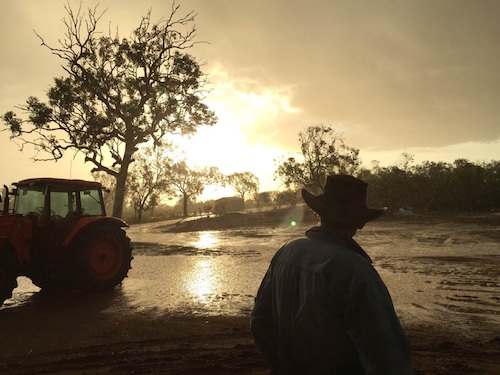 A shower of rain brings welcome relief from the January heat while seeding trials at Kilto.
A shower of rain brings welcome relief from the January heat while seeding trials at Kilto.
Hi, I am Tim Wiley, the Mosaic Agriculture Development Officer for the Department of Agriculture and Food’s (DAFWA) Northern Beef Futures (NBF) project based in Broome. I guess you are wondering what is mosaic agriculture? Well mosaic agriculture is based on improved rain-fed forage systems and irrigation precincts. The name refers to the pattern that is made when irrigated pastures are integrated into a system with dry-land (cleared) pastures – so it looks like a mosaic of different colours!
We are determining the production potential and feed quality of a range of pasture, fodder, and crop options for both irrigated and dry-land mosaic agriculture. We do this through a number of species trials, agronomy trials, and weed risk assessment trials at various sites throughout the Kimberley and Pilbara.
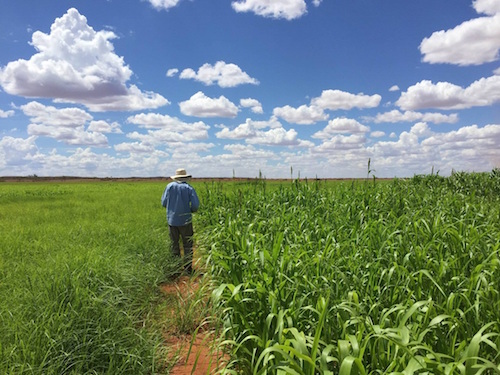 DAFWA’s Northern Beef Futures Research Officer Geoff Moore.
DAFWA’s Northern Beef Futures Research Officer Geoff Moore.
Species trials, as the name suggests, is testing species identified as potential pasture options for Northern pastoral properties to assess how well they will perform in our environment.
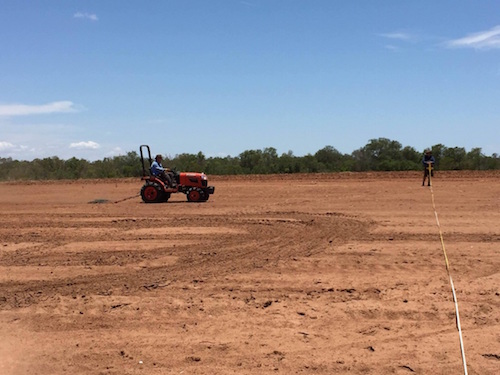 DAFWA’s NBF Mosaic Ag staff prepare the trial site at Kilto Station, Broome WA.
DAFWA’s NBF Mosaic Ag staff prepare the trial site at Kilto Station, Broome WA.
We have set up trial sites at various locations throughout the Kimberley and Pilbara including Gogo at Fitzroy Crossing, Kilto, and Wallal. This means that data is collected from a variety of soil types and climatic conditions and it also means a lot of kilometres for the team! A round trip from the office to each of the trial sites covers a whopping 2500km!
I am fortunate to work with well-known pasture scientists Clinton Revell and Geoff Moore as my colleagues, who have vast experience working with pasture species for Western Australian agricultural systems. Clinton, Geoff, and I can regularly be spotted toiling away in one of the trial sites with any willing participant who volunteers their time. From the black soils of GoGo to the back blocks, we are not afraid of rolling up our sleeves and sweating it out all in the name of research.
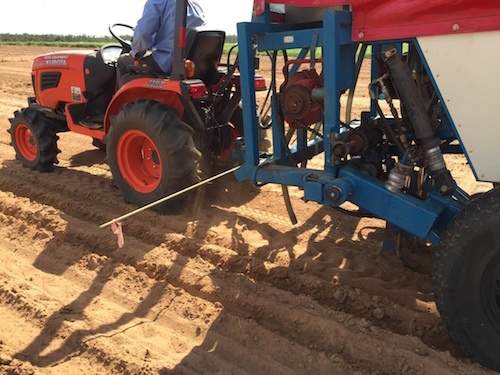 A cone seeder is used to plant trial plots at the Kilto trial site.
A cone seeder is used to plant trial plots at the Kilto trial site.
The vast majority of the land used for beef production in northern Western Australian is under pastoral lease. These pastoral stations are required to obtain a permit from the Pastoral Lands Board (PLB) to grow plant species which are not indigenous to WA. This is to minimize the risk that introduced pasture, fodder, and crop plants have unwanted or adverse effects on the natural environment. However there is a lack of local data, so we have established a network of field nursery trials in key environments to assess just this – whether a wide range of grasses and legumes will persist and/or spread in that environment, hence we call them our ‘weed risk trials’. These trials will provide the local data to calibrate the weed risk assessment system, so that decision makers are better informed on the potential risk of growing a species in a given environment.
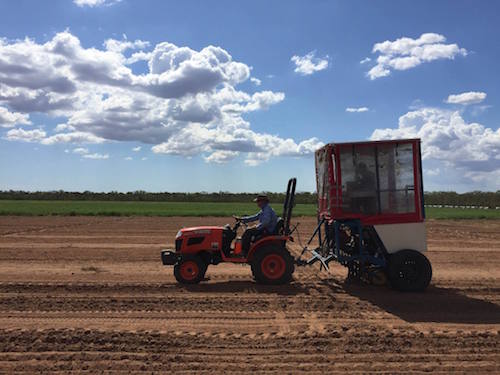 DAFWA NBF mosaic staff use the cone seeder to plant species trials at Kilto Station in the Kimberley.
DAFWA NBF mosaic staff use the cone seeder to plant species trials at Kilto Station in the Kimberley.
We are conducting our NBF mosaic agriculture pasture trials to determine if irrigation has the potential to provide a ready supply of feed for cattle on pastoral stations to assist in producing beef and cattle that suit market specifications, meeting market demand.
Stay tuned for tomorrow’s blog where you will be able to read about a totally different aspect of DAFWA’s Northern Beef Futures project’s work, but in the meantime if you would like to read more visit our webpage on the DAFWA website.
DAFWA’s Northern Beef Futures project is funded by the State Government’s Royalties for Regions program.
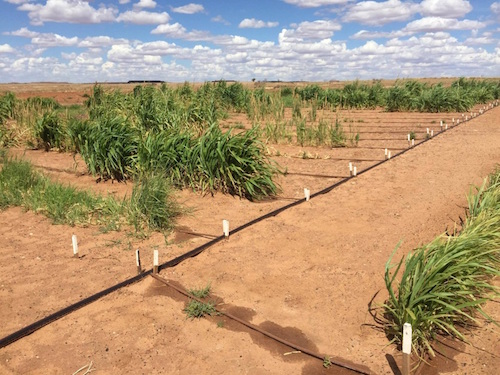 DAFWA’s NBF trial plot at Wallal showing species trials under irrigation.
DAFWA’s NBF trial plot at Wallal showing species trials under irrigation.
